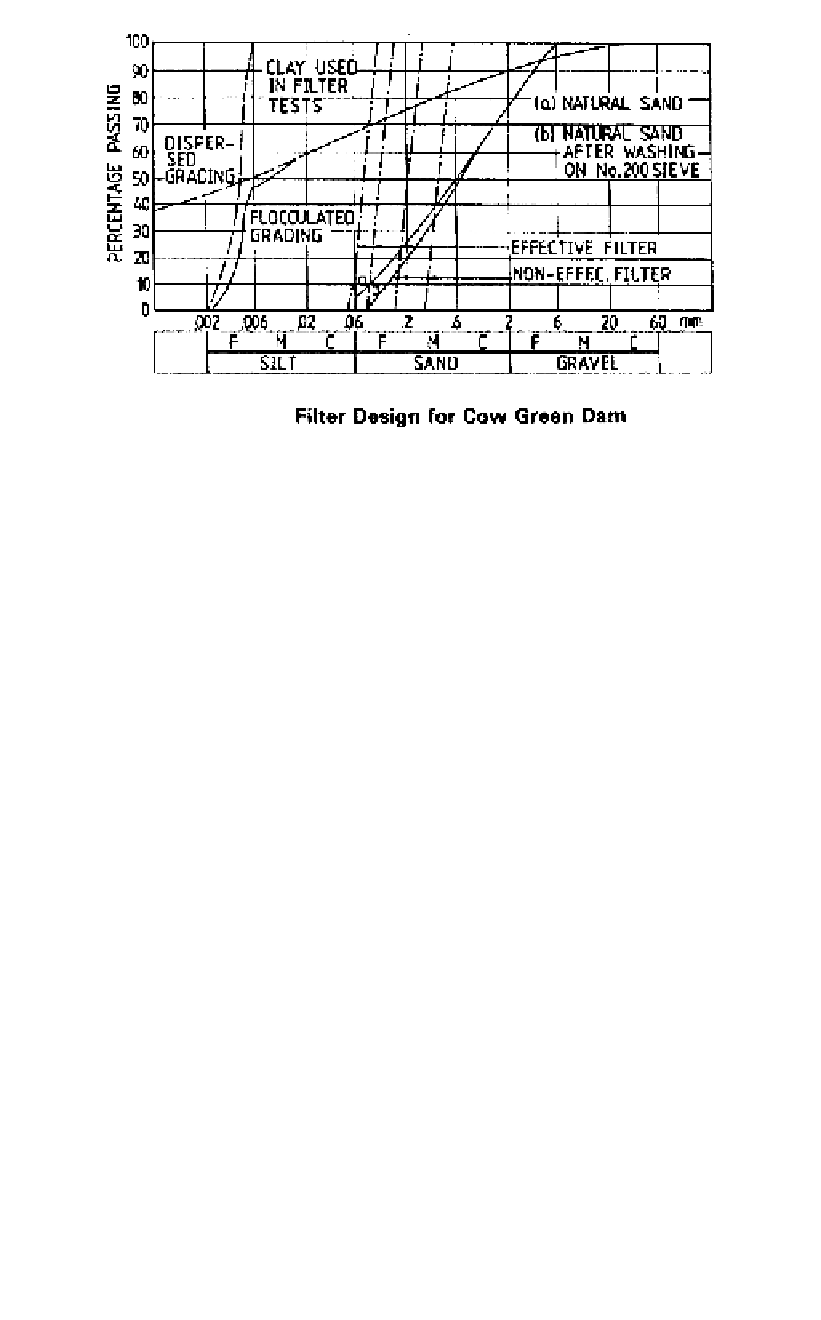Environmental Engineering Reference
In-Depth Information
Figure 9.12.
Filter designs for Cow Green Dam (Vaughan and Soares, 1982, reproduced with permis-
sion of ASCE).
test, but with no dispersant added. The water used for the test should be of the same chem-
istry as the water to be seeping through the dam since the floc size (degree of dispersion) is
dependent on the water chemistry.
Having determined the particle size distribution, a sample of the floc sized sediment is
prepared by sedimentation and used in filter experiments. In these experiments the flocs
are introduced to the filter in a dilute suspension.
Tests carried out in this manner on soils from two dams indicated the need for a signif-
icant silt fraction in the filter and that even a fine to medium sand size filter may not be
satisfactory, e.g. for Cow Green Dam shown in Figure 9.12.
The general tone of the discussion which followed the paper was that “based on expe-
rience with other laboratory experiments and performance of dams” the Vaughan and
Soares method was too conservative. Vaughan and Soares in the closure discussion stated
“the writers would stress that the need to meet these criteria completely is one for the
designer of any particular dam to assess, along with other factors involved in the provi-
sion of effective filters”.
The authors are not aware of any general acceptance of the “perfect filter” concept.
Vaughan and Soares' case is weakened somewhat by the coarse grading of some of the fil-
ters as constructed for Balderhead Dam - these would not meet USBR (1977) or Sherard
and Dunnigan (1985) criteria.
9.2.1.5
Lafleur and co-workers
Lafleur et al. (1989, 1993) prefer to work in terms of the opening size of the filter O
E
and
consider this in terms of the “indicative” or “self filtering” grain size, d
SF
of the base soil.
This has advantages where, as they do, one is considering conventional sand - gravel fil-
ter, and geotextiles. They indicate that if the retention ratio R
R
O
E
/d
SF
is
1, then
continuous erosion will occur and that if R
R
1, clogging (or “blinding”) of the base
soil/interface may occur, leading to a build up in pore pressure on the filter. Clogging is
particularly a problem for internally unstable soils and the fines accumulate upstream of
the filter, not within it.
Figure 9.13
summarizes the Lafluer et al. (1993) design approach. Note that it is
not identical to Lafleur (1989) as reported in ICOLD (1994). In particular the retention

